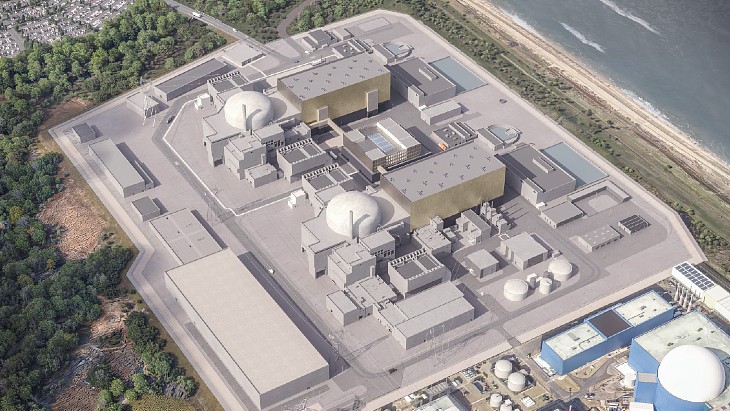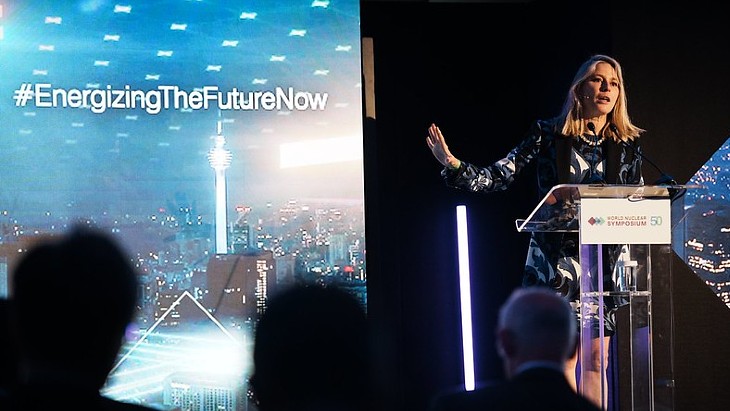In a pressurised water reactor, steam generators transfer reactor core heat from the primary coolant loop into a secondary loop where it can be used to generate electricity. The secondary loop is a closed system in which steam produced in the steam generator is conducted towards the turbine. Once condensed, the water is returned to the steam generator.
A quality deviation in the welding of the main secondary system of the Flamanville EPR in Normandy, northern France, was detected on 21 March last year during the initial comprehensive inspection, a regulatory requirement prior to the reactor starting up. This inspection includes an examination of the welds in the primary and secondary systems, and allows an initial reference state of the plant to be established before it begins operating. Further deviations in secondary system welds were subsequently detected.
Last July, EDF said a total of 33 welds had been found to have quality deficiencies and will be repaired. A further 20 welds will be redone, even though they do not have any defects, it added. At that time, EDF revised its start-up schedule for the Flamanville EPR. Hot functional tests - which involve checking the equipment under similar temperature and pressure conditions to those under which it will operate - had been due to start that month, but would now begin before the end 2018, EDF said. The loading of fuel into the unit's core was rescheduled to late-2019 instead of late-2018. The company also raised the target construction costs for the plant from EUR10.5 billion (USD11.9 billion) to EUR10.9 billion (at the 2015 rate, excluding interim interest).
At ASN's annual review of nuclear safety on 29 January, the regulator warned that start-up of the reactor could be further delayed if certain weldings need to be replaced. Eight welds on pipes in the reactor's main secondary system, located in hard-to-access areas, were under investigation, it noted at that time.
Earlier this month, EDF asked ASN for its opinion on the possibility of repairing these welds in about 2024, after commissioning of the reactor.
However, in a 19 June letter to EDF, ASN has now told the utility those eight welds must be repaired before the Flamanville EPR can start up. The regulator noted repair of the weld prior to commissioning of the reactor "is technically feasible".
"Postponement of the repair operations until after reactor commissioning would pose a number of problems, notably with regard to demonstrating the safety of the reactor during the interim period," ASN told EDF. "ASN therefore considers that repair of the welds concerned before commissioning of the reactor is the baseline solution."
ASN noted in its communication with EDF that the company expected to repair the welds for commissioning of the unit by the end of 2022, depending on the repair work undertaken.
EDF said it is reviewing ASN's decision. The company said it is currently analysing the impact of this decision on the Flamanville EPR schedule and cost. It expects to give a detailed update on the next steps in the project "in the upcoming weeks".
Construction work began in December 2007 on the 1650 MWe unit at the Flamanville site in Normandy - where two reactors have been operating since 1986 and 1987. The EPR reactor was originally expected to start commercial operation in 2013.
Cold functional tests - which verify the leak-tightness of the primary circuit - began at Flamanville 3 in December 2017 and were completed the following month. Testing of the reactor building to confirm its airtightness was completed last April. Hot functional tests - which involve checking the equipment under similar temperature and pressure conditions to those under which it will operate - had been due to start in July.
In December, unit 1 of the Taishan plant in China's Guangdong province became the first EPR to enter commercial operation. Taishan 2 is scheduled to begin commercial operation this year. Olkiluoto 3 in Finland, the first-of-a-kind EPR, has completed hot functional tests and is preparing to load fuel. Two EPR units are also under construction at the Hinkley Point C project in Somerset, UK.

.jpg)



_55530.jpg)
_42372.jpg)
_37521_70699.jpg)

_76087_55556.jpg)




